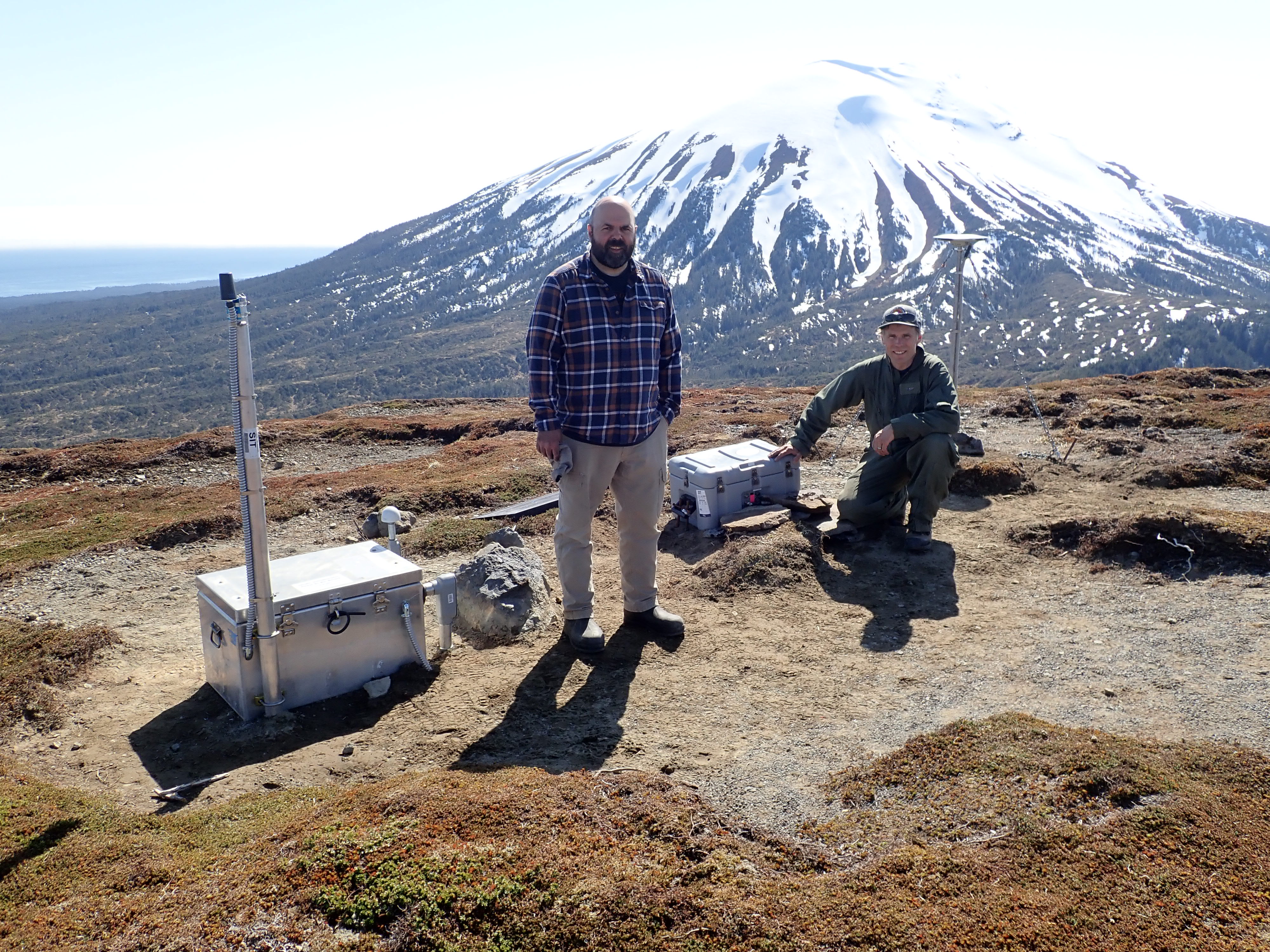Mt. Edgecumbe gets a new monitoring station
After the recent seismic swarm caused by magma movement beneath the Mt. Edgecumbe volcanic field (MEVF), the Alaska Volcano Observatory has placed a seismometer and GPS sensor on Kruzof Island to better monitor the Mt. Edgecumbe volcanic field. This station will improve our ability to detect smaller earthquakes, locate earthquakes more precisely, and measure deformation.
Our new geophysical station is called EDCR (short for Edgecumbe Crater Ridge) and you can see the seismic data recorded from it in near-real-time at https://www.avo.alaska.edu/webicorders/Edgecumbe/EDCR.php. For background information about reading webicorders, click here: AVO Webicorders.
While EDCR is a single temporary seismometer and GPS sensor, AVO is working with the USFS Tongass National Forest to eventually place additional permanent monitoring stations at several sites on southern Kruzof Island.

While completing reconnaissance for additional, more permanent stations, AVO geophysical personnel also conducted an airborne gas survey, looking for evidence of volcanic degassing from the MEVF, the results of which will be reported as soon as they've been reviewed.
Many thanks to the US Forest Service for all their assistance with our newest seismic station, and to the US Coast Guard for assisting with reconnaissance. More information on Mt. Edgecumbe is always available on AVO's website.